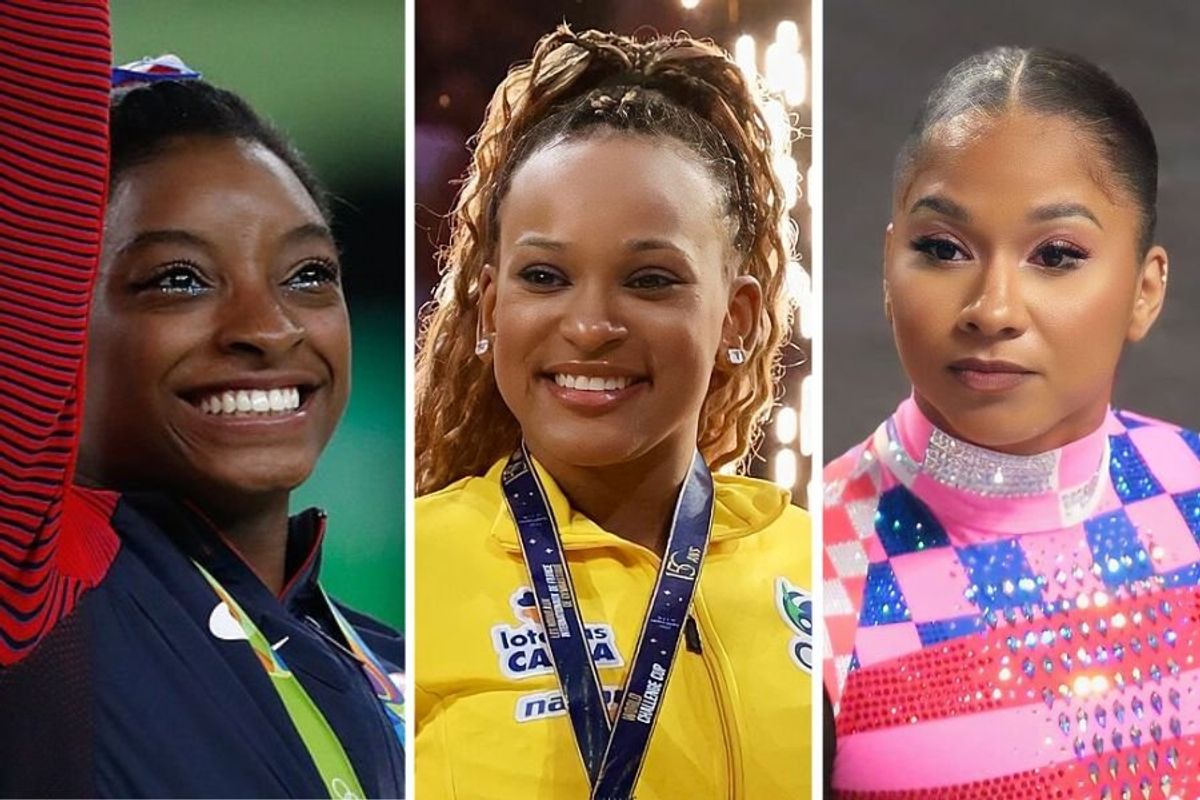Simone Biles and Jordan Chiles bow before Rebecca Andrade, embodying the Olympic spirit
Seeing the GOAT give a "We're not worthy" bow to her competitor is a sight to behold.

Simone Biles and Jordan Chiles gave Brazilian gold medal winner Rebeca Andrade her props.
Every Olympics has moments captured on camera that go down in history. The photo finishes. The inspiring displays of sportsmanship. The records being broken and humans doing things no human has done before.
Simone Biles has had her fair share—or more—of iconic Olympic moments. And she just added another one to her list with the help of her friend and Team USA teammate, Jordan Chiles.
Unsurprisingly, Biles was favored to win gold in the floor exercise final for women's gymnastics at the 2024 Paris Olympics. The floor is one of her strongest events, and the high degree of difficulty in her routine offered some wiggle room for small errors.
Biles on the floor is like Jordan on the court at his peak—literally gravity-defying and simply mesmerizing to watch. But Brazilian gymnast Rebeca Andrade has been giving Biles a serious run for her money. In any other era, she'd have a pocket full of gold medals, but she's had the fortune-yet-misfortune of competing against the greatest gymnast of all time. However, she finally managed to eke out a win over the GOAT in the floor exercise final in Paris. Andrade took the gold, leaving Biles with the silver and Chiles the bronze.
If besting Simone Biles on the floor wasn't enough, Andrade got another boost as she approached the podium to receive her gold medal. In a synchronized gesture, giving props where it was due, Biles and Chiles knelt and bowed down before Andrade, creating one of those Olympic snapshots the world will never forget.
What was especially great about this moment wasn't just the genuine respect Biles and Chiles showed Andrade. It's the sheer joy with which they did it. Biles being so dominant in her sport could easily lead to pride and arrogance, which doesn't seem to have happened, and losing a gold she was expected to win could easily crush her spirit, but that also doesn't seem to have happened. The GOAT recognizes, acknowledges and honors greatness when she sees it, and Andrade clearly brought her A game.
Here we can see Chiles and Biles plotting to give Andrade the "We're not worthy" bow in real time:
Biles and Andrade have both talked about how they've pushed one another to be better, which is exactly what competition is about. And celebrating excellence wherever it comes from is exactly what the Olympic games are all about. Biles and Chiles embodied that Olympic spirit in the floor final and medal ceremony, doing what they came to Paris to do, making it to the medal podium and then lifting up the gymnast who outperformed them both.
Biles and Chiles spoke with reporters about what prompted them to do the bow and how much they admire "the queen" Andrade.
What a beautiful testament to good sportsmanship and joyful camaraderie between competitors, and what a wonderful example for us all.
Here's what people are saying about the moment:
"This is the best part of everything Just class and sportsmanship Soooo wholesome."
"This must be real meaning of the Olympics. How beautiful is that they congratulate and respect each other."
"This is exactly what it's all about! Celebrating the human spirit and perseverance. I love their story. Their competitiveness pushes each other to be their greatest selves."
"The nicest podium of all times. Fantastic women."
"The world's best - inside and out. What an amazing accomplishment."





 Rihanna Nails GIF
Rihanna Nails GIF Stop Right There The End GIF by Freeform
Stop Right There The End GIF by Freeform Good luck trying to catch a gazelle.
Good luck trying to catch a gazelle. Chickens will eat just about anything.
Chickens will eat just about anything. There's actually a big difference between horses and zebras besides just the stripes.
There's actually a big difference between horses and zebras besides just the stripes.